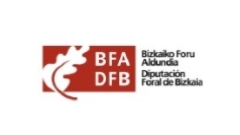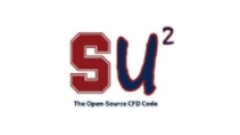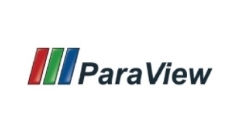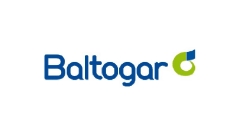Research
Software
BBIPED
CFD Industrial Platform for Engineering Design
News! BBIPED platform beta has been released !. Download
If you have windows, you can still try it by means of VirtualBox. Here, you can download a virtualbox with everything ready. Try it! BBIPED-VirtualBox
BBIPED is an engineering simulation software for fluid dynamics industrial applications. BBIPED can handle a wide range of engineering applications in sectors such as turbomachinery, aeronautics, renewable energy, biosciences, advanced manufacturing, automotive, water and heat management; providing ad-hoc solutions for specific industry needs.
The BBIPED Graphical User Interface allows an automated CFD (Computational Fluid Dynamics) simulation process from CAD generation, meshing, solving and post-processing.
The idea of developing this platform was proposed by BCAM and Baltogar, who joined efforts to overcome current industrial challenges in turbomachinery design by means of extensive research. Thus, BBIPED is the result of a fruitful collaboration between science and industry. This work has been developed within the research project "Development of an efficient, flexible and innovative CFD Computational Platform to optimally simulate and design industrial products and processes", co-funded by the Department of Economic Promotion of the Biscay Foral Council and the Department of Education, Language Policy and Culture of the Basque Government.
BBIPED Key Features
- A friendly user GUI (easily customizable on demand) is provided to better manage the CFD workflow process from CAD, to solving and post-processing
- Ad-hoc solutions to fit industrial needs keeping the same interface, reducing engineers learning curve
- Flexible easy to use for engineers, showing only what they need (customizable configuration variables views)
BBIPED Extra Features
- Highly customizable eXtended SU2 (XSU2) library for future developments
- Multi-zone computation
- Multiple rotating reference frame: using multizone or virtual zone approaches
- Improved boundary conditions for internal flows.
- Customized CAD parametrization for automatic optimization
- CAD-free flow simulation
BBIPED Research Roadmap
- Multiphysics
- Proper Orthogonal Decomposition (POD) and Genetic Algorithms (GA) for optimization
- New turbulent models
- Medical Applications
Our partner
We would like to thanks the effort and support of our main partner in this project, Baltogar
Co-funded by


Acknowledgments



Download Links:
LBM-HPC
LBM-HPC is a CFD tool optimized for distributed memory architectures. Based on Lattice-Boltzmann method and the so-called pull approach, LBM-HPC is parallelized using a hybrid MPI/OpenMP approach with parallel I/O.
The most common LBM standards for bidimensional (D2Q9) and tridimensional (D3Q19) simulations are included into the tool.
The implementation is portable and has been verified to work on several different supercomputers such as MareNostrum-BSC, Lindgren-PDC (Cray XE6) and Hornet-HLRS (Cray XC40) systems.
npROCRegression: Kernel-Based Nonparametric ROC Regression Modelling
Implements several nonparametric regression approaches for the inclusion of covariate information on the receiver operating characteristic (ROC) framework.
Download from:
PROreg: Patient Reported Outcomes Regression Analysis
Offers a variety of tools, such as specific plots and regression model approaches, for analyzing different patient reported questionnaires. Especially, mixed-effects models based on the beta-binomial distribution are implemented to deal with binomial data with over-dispersion (see Najera-Zuloaga J., Lee D.-J. and Arostegui I. (2017).
Download from:
SpATS: Spatial Analysis of Field Trials with Splines
Allows for the use of two-dimensional (2D) penalised splines (P-splines) in the context of agricultural field trials. Traditionally, the modelling of the spatial or environmental effect in the expression of phenotypes has been done assuming correlated random noise (Gilmour et al, 1997). We, however, propose to model the spatial variation explicitly using 2D P-splines (Rodriguez-Alvarez et al., 2016; arXiv:1607.08255). Besides the existence of fast and stable algorithms for estimation (Rodriguez-Alvarez et al., 2015; Lee et al., 2013), the direct and nice interpretation of the spatial trend that this approach provides makes it attractive for the analysis of field experiments.
Download from:
SplineIntegration
Machine Learning Discovery of Optimal Quadrature Rules for Isogeometric Analysis.
Authors: Tomás Teijeiro, Ali Hashemian, Jamie M. Taylor, David Pardo
License:GPLv3
CL file
Datasets (Zenodo) for the paper "Geometry and tool motion planning for curvature adapted CNC machining"
Authors: Michael Barton, Michal Bizzarri, Oleksii Sliusarenko, Florian Rist, Helmut Pottmann
License: Zenodo
CL file
Datasets (Zenodo) for the paper "Manufacturing of screw rotors via 5-axis double-flank CNC machining"
Authors: Michael Barton, Michal Bizzarri
License: Zenodo
BBIPED-GUI
Qt-based GUI for BBIPED. It integrates 3rd party software ( Paraview, Salome) and it provides an automatic configuration of CFD problems for their simulation using BBIPED-CORE
Authors: Carmen Alonso
License: LGPLv3.0
Placement
BCAM repository (redmine) - CFD-MS
Mesh Converters
Currently available through BBIPED-CORE. Salome is one of the best open-source CAD and Mesh generator softwares that is widely used in research communities. To take advantage of this code we needed to generate .su2 extension for BBIPED. ExportSU2FromSalome.py is a script based code which must be run inside Salome in generate .su2 file directly from the generated mesh. Other converters such as .su2 to .med or .vtk and .vtk to .med are also available in SU2Converter.py and VTKConverter.py
Authors: Imanol Garcia
Lincense: LGPLv3.0 (same licence as BBIPED)
Placement
BCAM repository (redmine) - CFD-MS – Inside BBIPED-GUI and BBIPED CORE
BBIPED-CORE
It is a general Finite Volume code for simulation of wide range of applications such as: Aerodynamics and gas dynamics, water and liquid fluid flow, Turbomachinary. It has been the main CFD solver of the group since 2013 and some industrial projects have been accomplished in turbomachinary, renewable energy and wave energy sectors. The code is based on an old stable version of Su2 code (2.0.8) from Stanford university which is significantly has been changed in terms of new added features and several bug fixings.
Authors: Ali Ramezani, Goran Stipcich
License: LGPL
LevelSetFenics
Code for evolution of front in deterministic environment
Authors: Andrea Trucchia
License: GPL or any Licence BCAM requires
Placement
Personal Laptop and Hypatia
Visualizer_tool
Code for visualization of several front propagation code outputs
Authors: Andrea Trucchia
License: GPL or any Licence BCAM requires
Placement
Personal Laptop and Hypatia
OpenTraffic
OpenTraffic is an open source platform for Traffic Incidences Data Analytics in Euskadi.
Authors: Gorka Kobeaga, Dae-Jin Lee
License: General Public License
HRQoL
HRQoL is an R package containing regression models with Beta-Binomial distribution for Health Related Quality of Life data
Authors: Josu Nájera, Dae-Jin Lee
License: General Public License
SAP
R package for fast estimation of multidimensional models with anisotropic penalties
Authors: María Xosé Rodriguez, Dae-Jin Lee, Thomas Kneib, María Durbán, Paul Eilers
License: General Public License
SOP
Pre-release version of a more general which includes SAP algorithm and implements adaptive smoothing in one a more dimensions
Authors: María Xosé Rodriguez, Manuel Oviedo, Dae-Jin Lee
License: General Public License
Placement
Personal computer
statgenHTP
High Throughput Phenotyping (HTP) Data Analysis
Authors: Emilie J Millet, Maria Xose Rodriguez Alvarez, Diana Marcela Perez Valencia, Isabelle Sanchez, Nadine Hilgert, Bart-Jan van Rossum, Fred van Eeuwijk, Martin Boer
License: Open source
spHDM
Supporting code for: "A two-stage approach for the spatio-temporal modelling of high throughput phenotyping data" (Scientific Reports)
Authors: Diana Marcela Pérez Valencia, María Xosé Rodríguez Álvarez, Martin Boer, Lukas Kronenberg, Andreas Hund, Llorence Cabrera Bosquet, Emillie Millet, Fred van Eeuwijk
License: Open source
spatio-temporal spHDM
Supporting code for: "A one-stage approach for the spatio-temporal modelling of high throughput phenotyping data" (BiorXiv, under review JABES)
Authors: Diana Marcela Pérez Valencia, María Xosé Rodríguez Álvarez, Martin Boer, Fred van Eeuwijk
License: Open source
TimeToEvent-InjurySim
The accompanying code repository for the scientific paper: "Zumeta-Olaskoaga, L., Weigert, M., Larruskain, J., Bikandi, E., Setuain, I., Lekue, J., … Lee, D.-J. (2021). Prediction of sports injuries in football: a recurrent time-to-event approach using regularized Cox models. AStA Advances in Statistical Analysis, 1–26. doi: 10.1007/s10182-021-00428-2"
Authors: Lore Zumeta-Olaskoaga (software developer), Maximilian Weigert (software developer)
Jon Larruskain, Eder Bikandi, Igor Setuain, Josean Lekue, Helmut Küchenhoff, Dae-Jin Lee (co-authors)
License: MIT
flex-mod-training-loads-recu-injuries
The accompanying code repository for the research paper: "Zumeta-Olaskoaga, L., Bender, A. and Lee, D.-J. Flexible modelling of time-varying exposures and recurrent events to analyze training loads effects in team sports injuries".
Authors: Lore Zumeta-Olaskoaga (software developer), Andreas Bender and Dae-Jin Lee (co-authors)
License: MIT
injurytools
Injury tools R package: "A Toolkit for Sports Injury Data Analysis"
Authors: Lore Zumeta-Olaskoaga (author, mantainer)
License: MIT
LSFire+
Code for evolution of front in random environment
Authors: Andrea Mentrelli, modified by Andrea Trucchia
License: GPL or any Licence BCAM requires
Placement
Personal Laptop and Hypatia
Langevin equation
Solve a Langevin equation
Authors: Daniel Molina García
License: If it depends on me: GPL3+
Placement
Langevin
BBIPED-GUI
Qt-based GUI for BBIPED. It integrates 3rd party software ( Paraview, Salome) and it provides an automatic configuration of CFD problems for their simulation using BBIPED-CORE
Authors: Carmen Alonso
License: LGPLv3.0
Download from
BCAM repository (redmine) - CFD-MS
BBIPED-Web
A simplified web-based GUI for academic purposes to be used in courses, avoiding OS dependencies, and connected to BCAM server resources. This is a result of a final Master thesis (supervised by Carmen Alonso Montes) - Already finished
Authors: Antonio Fernández de Rojas
License: LGPLv3.0
Download from
BCAM repository (redmine) – CFD-MS – BBIPED Web. Provided full source code to IT System.
https://projects.bcamath.org/attachments/download/212/BBIPED-Web-Platform-v0.1.zip
Born model, Core-Shell model and Damped Shifted Force Coulomb sum codes compartible with LAMMPS and potfit GPL-licence packages for molecular simulations.
The Core-Shell model and the Damped Shifted Force (DSF) method for the Coulomb sum were added to the open source potfitforce-matching code, in order to allow the fitting of interatomic potentials from ab-initio data with this approaches.
The DSF method is already commited to the master branch of the code and will be released with the next stable version. The Core-Shell implementation is still in my local fork under testing and working on further features.
The Born model coupled to the Damped Shifted Force methods were added to the open source LAMMPS molecular dynamics code to perform dynamics consistent with the derived potentials, these changes are in my local fork but soon to be submitted to the master branch.
Authors: Ariel Lozano
License: GPL
Numerical Regge pole analysis of resonance structures in state-to-state reactive differential cross sections (DCS_Regge)
This is the third (and the last) code in a collection of three programs [Sokolovski et al. (2011), Akhmatskaya et al. (2014)] dedicated to the analysis of numerical data, obtained in an accurate simulation of an atom-diatom chemical reaction. Our purpose is to provide a detailed complex angular momentum (CAM) analysis of the resonance effects in reactive angular scattering. The code evaluates the contributions of a Regge trajectory (or trajectories) to a differential cross section in a specified range of energies. The contribution is computed with the help of the methods described in [Dobbyn et al. (1999), Sokolovski and Msezane (2004), Sokolovski et al. (2007)]. Regge pole positions and residues are obtained by analytically continuing S-matrix element, calculated numerically for the physical integer values of the total angular momentum, into the complex angular momentum plane using the PADE_II program [Sokolovski et al. (2011)]. The code represents a reactive scattering amplitude as a sum of the components corresponding to a rapid “direct” exchange of the atom, and the various scenarios in which the reactants form long-lived intermediate complexes, able to complete several rotations before breaking up into products.
Authors: Elena Akhmatskaya
License: the CPC non-profit use license agreement - Mendeley Data
Numerical Regge pole analysis of resonance structures in elastic, inelastic and reactive state-to-state integral cross sections (ICS_Regge)
ICS_Regge is a suite of FORTRAN codes for evaluation of the resonance contribution a Regge trajectory makes to the integral state-to-state cross section (ICS) within a specified range of energies. The contribution is evaluated with the help of the Mulholland formula (Macek et al., 2004) and its variants (Sokolovski et al., 2007; Sokolovski and Akhmatskaya, 2011). Regge pole positions and residues are obtained by analytically continuing S-matrix element, evaluated numerically for the physical values of the total angular momentum, into the complex angular momentum plane using the PADE_II program (Sokolovski et al., 2011). The code decomposes an elastic, inelastic, or reactive ICS into a structured, resonance, and a smooth, ‘direct’, components, and attributes observed resonance structure to resonance Regge trajectories.
Authors: Elena Akhmatskaya
License: the CPC non-profit use license agreement - Mendeley Data
Extracting S-matrix poles for resonances from numerical scattering data: type-II Padé reconstruction(PADE II)
The code is designed for evaluation of resonance pole positions and residues of a numerical scattering matrix element in the complex energy (CE) as well as in the complex angular momentum (CAM) planes. Analytical continuation of the S-matrix element is performed by constructing a type-II Pade approximant from given physical values. The algorithm involves iterative ‘preconditioning’ of the numerical data by extracting its rapidly oscillating potential phase component. The code has the capability of adding non-analytical noise to the numerical data in order to select ‘true’ physical poles, investigate their stability and evaluate the accuracy of the reconstruction. It has an option of employing multiple-precision (MPFUN) package developed by D.H. Bailey wherever double precision calculations fail due to a large number of input partial waves (energies) involved.
Authors: Elena Akhmatskaya
License: the CPC non-profit use license agreement - Mendeley Data
BayFlux
Bayesian Genome Scale 13C Metabolic Flux Analysis and Two Scale Metabolic Flux Analysis (2S-13C MFA). Co-development with Joint BioEnergy Institute (JBEI), Berkeley Lab, USA. The code also includes utilities for comparison of BayFlux with another established package called 13CFLUX2 which allow for automation of changing model’s input files, running the optimization, writing results to files for another software and reading from these files, and changing the inputs in an automatic way in BayFlux. This is implemented in several python and bash scripts: readfromxml.py with the changefml routine; script_automatechangefmlfile.py, script_automate13cflux2.sh and solsallinonecsvextended.py.
In addition, several functions for evaluation, plotting, and debugging purposes have been developed. Among these are enhancements to the validate function in cobrapy that is used in BayFlux and BayFlux's normpdf and logLikelihood function. Furthermore, an additional validatecheck of net samples was included that can optionally be turned on during sampling and can be extended to also checking directional fluxes. For plotting purposes several functions were added: overlap_density_plt, mdvboxplotwith13CFLUX2, paper_density_plt and enhanced: mdvboxplot, among others. We also added a routine to be able to provide simulated data as an input instead of real 13C data called simulated_data_as_input.
Jupyter notebooks illustrate the use of these developments for an E.coli model (including some additional tricks that can be used for debugging purposes.
Authors: Christina Schenk
License: Open source
Continuous Time random walk
Simulate the stochastic process CTRW and do statistics on the trajectories
Authors: Daniel Molina García
License: If it depends on me: GPL3+
Placement
CTRW
Generalised gray Brownian motion
Simulate the stochastic process ggBm and do statistics on the trajectories
Authors: Daniel Molina García
License: If it depends on me: GPL3+
Placement
ggBm
Ornstein-Uhlenbeck
Simulate the stochastic process O-U and do statistics on the trajectories
Authors: Daniel Molina García
License: If it depends on me: GPL3+
Placement
Ornstein-Uhlenbeck
Code and data reproducing the paper "A unifying framework for mean field theories of asymmetric kinetic Ising systems"
Authors: Miguel Aguilera
License: GPLv3.0
PDE-HMC Interface
Bayesian inference combined with Advanced Hamiltonian samplers for parameterization of PDE models using a Finite-Volume solution scheme
Authors: Caetano Souto Maior Mendes
License: AGPL V3
KmeansLandscape
Study the k-means problem from a local optimization perspective
Authors: Aritz Pérez
License: free and open source software
Placement
Local
PGM
Procedures for learning probabilistic graphical models
Authors: Aritz Pérez
License: free and open source software
Placement
Local
On-line Elastic Similarity Measures
Adaptation of the most frequantly used elastic similarity measures: Dynamic Time Warping (DTW), Edit Distance (Edit), Edit Distance for Real Sequences (EDR) and Edit Distance with Real Penalty (ERP) to on-line setting.
Authors: Izaskun Oregi, Aritz Perez, Javier Del Ser, Jose A. Lozano
License: free and open source software
Probabilistic load forecasting based on adaptive online learning
This repository contains code for the paper Probabilistic Load Forecasting based on Adaptive Online Learning
Authors: Veronica Alvarez
License: free and open source software
MRCpy: a library for Minimax Risk Classifiers
MRCpy library implements minimax risk classifiers (MRCs) that are based on robust risk minimization and can utilize 0-1-loss.
Authors: Kartheek Reddy, Claudia Guerrero, Aritz Perez, Santiago Mazuelas
License: free and open source software
Minimax Classification under Concept Drift with Multidimensional Adaptation and Performance Guarantees (AMRC)
The proposed AMRCs account for multivariate and high-order time changes, provide performance guarantees at specific time instants, and efficiently update classification rules.
Authors: Veronica Alvarez
License: free and open source software
Efficient learning algorithm for Minimax Risk Classifiers (MRCs) in high dimensions
This repository provides efficient learning algorithm for Minimax Risk Classifiers (MRCs) in high dimensions. The presented algorithm utilizes the constraint generation approach for the MRC linear program.
Authors: Kartheek Reddy
License: free and open source software
Double-Weighting for General Covariate Shift Adaptation
This repository provides efficient learning algorithm for Minimax Risk Classifiers (MRCs) in covariate shift framework.
Authors: Jose Segovia
License: free and open source software
BayesianTree
Approximating probability distributions with mixtures of decomposable models
Authors: Aritz Pérez
License: free and open source software
Placement
Local
MixtureDecModels
Learning mixture of decomposable models with hidden variables
Authors: Aritz Pérez
License: free and open source software
Placement
Local
FractalTree
Implementation of the procedures presented in A. Pérez, I. Inza and J.A. Lozano (2016). Efficient approximation of probability distributions with k-order decomposable models. International Journal of Approximate Reasoning 74, 58-87.
Authors: Aritz Pérez
License: free and open source software
OPTECOT - Optimal Evaluation Cost Tracking
This repository contains supplementary material for the paper Speeding-up Evolutionary Algorithms to solve Black-Box Optimization Problems. In this work, we have presented OPTECOT (Optimal Evaluation Cost Tracking): a technique to reduce the cost of solving a computationally expensive black-box optimization problem using population-based algorithms, avoiding loss of solution quality. OPTECOT requires a set of approximate objective functions of different costs and accuracies, obtained by modifying a strategic parameter in the definition of the original function. The proposal allows the selection of the lowest cost approximation with the trade-off between cost and accuracy in real time during the algorithm execution. To solve an optimization problem different from those addressed in the paper, the repository also contains a library to apply OPTECOT with the CMA-ES (Covariance Matrix Adaptation Evolution Strategy) optimization algorithm.
Authors: Judith Echevarrieta, Etor Arza, Aritz Pérez
License: free and open source software
TransfHH
A multi-domain methodology to analyze an optimization problem set
Authors: Etor Arza, Ekhiñe Irurozki, Josu Ceberio, Aritz Perez
License: free and open source software
GESP
Authors: Etor Arza, Leni Le Goff, Emma Hart
License: free and open source software
OPLib
OPLib: Test instances for the Orienteering Problem
Authors: Gorka Kobeaga, Maria Merino, Jose A. Lozano
License: free and open source software
RB&C and EA4OP
In this repository, you will find the implementation of two algorithms to solve the Orienteering Problem (OP): RB&C (exact) https://doi.org/10.1016/j.ejor.2023.07.034 and EA4OP (heuristic) https://doi.org/10.1016/j.cor.2017.09.003.
Authors: Gorka Kobeaga, Maria Merino, Jose A. Lozano
License: free and open source software
A307429 sequence
OEIS sequence with the number of permutations of {1..n} at Kendall tau distance k of permutation sigma1 and k+1 Kendall tau distance of permutation sigma2, where sigma1 and sigma2 are at Kendall tau distance 1. Published in https://doi.org/10.1007/s12293-022-00371-y
Authors: Imanol Unanue, Maria Merino, Jose A. Lozano
License: free and open source software
SMIQLib
SMIQLib is a repository of multistage stochastic mixed 0–1 quadratic instances. See
https://doi.org/10.1007/s10479-018-3032-7
Authors: Unai Aldasoro, Maria Merino, Gloria Pérez
License: free and open source software
SMIQLib2
Dataset for Stochastic Mixed Integer Quadratic Optimization
Authors: Unai Aldasoro, Maria Merino, Gloria Pérez
License: free and open source software
Minimax Forward and Backward Learning of Evolving Tasks with Performance Guarantees
This repository is the official implementation of Minimax Forward and Backward Learning of Evolving Tasks with Performance Guarantees.
Authors: Veronica Alvarez
License: free and open source software

